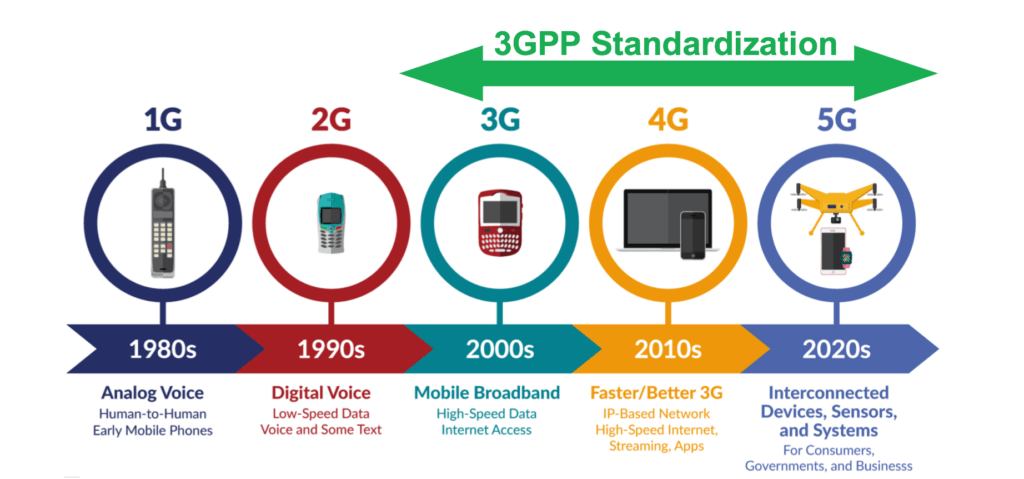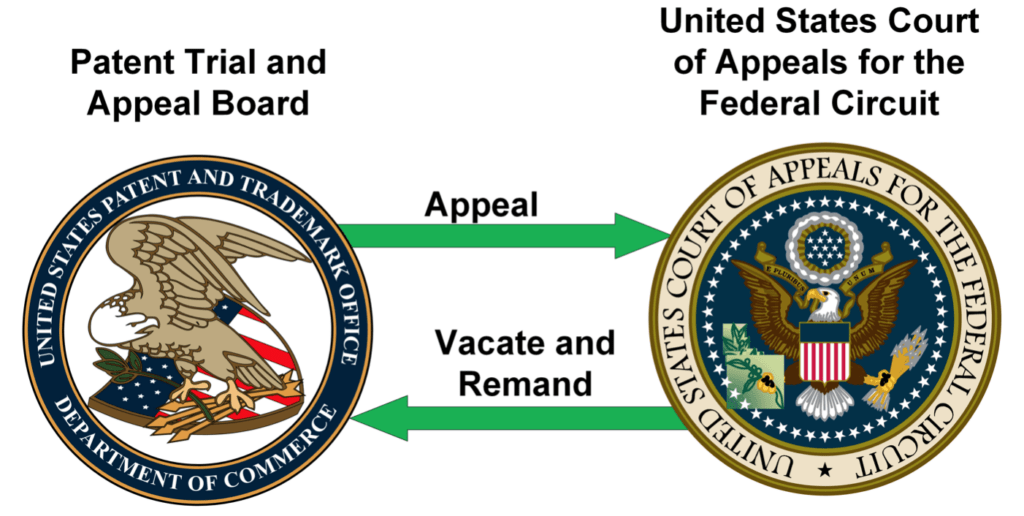Cellular communications is entering its fifth generation (5G) of technological evolution. In 1998, 3GPP – an international partnership of regional standardization organizations – was created to develop world-wide technical specifications for mobile communications.
5G, the latest specification developed by 3GPP has been in development since 2012. As part of the standard development process, an international group of representatives from standards organizations, companies, and governments meet regularly to define use cases to guide the development of the next generation of cellular communications technologies. Following the definition of the use cases, these groups then work collaboratively to create the standards that will be followed by cellular communications manufacturers and service providers.
 3GPP has setup a web based mechanism by which documents that propose technical aspects of new standards are made available to members of 3GPP and the public prior to 3GPP technical meetings. Many of these technical proposals become the subject of patent applications. It is hoped, by the proposer, that their proposal will be written into the 3GPP standard, and that their patent will become a standard essential patent. In other words, the patent will cover a section of the proposal that will eventually be practiced (and thus infringed) by companies adhering to the new standard.
3GPP has setup a web based mechanism by which documents that propose technical aspects of new standards are made available to members of 3GPP and the public prior to 3GPP technical meetings. Many of these technical proposals become the subject of patent applications. It is hoped, by the proposer, that their proposal will be written into the 3GPP standard, and that their patent will become a standard essential patent. In other words, the patent will cover a section of the proposal that will eventually be practiced (and thus infringed) by companies adhering to the new standard.
35 U.S.C. 102(a)(1) states that “a person shall be entitled to a patent unless—the claimed invention was … described in a printed publication … or otherwise available to the public before the effective filing date of the claimed invention.” As one might imagine, by the plain meaning of this statute, 3GPP documents have been considered a rich source of prior art used by patent examiners and litigators in arguing the patentability of patent applications and issued patents. However, a recent case, Samsung v. InfoBridge (Fed. Cir. 2019) (hereafter referred to as “Samsung”) is now challenging the assumption that documents made available to members of a standards setting body can be used as valid prior art in challenging patentability.
Samsung addresses the issue of whether a “Working Draft” of a Moving Picture Experts Group (MPEG) standard developed by a Joint Collaborative Team on Video Coding (JCT-VC) was made “publicly” available prior to a patent’s filing date. The methods claimed by the patent are essential to the MPEG High Efficiency Video Coding standard. MPEG is a standard setting body for audio and video compression and transmission. In Samsung v. InfoBridge, Samsung argued that the “Working Draft was made available to the public on at least three occasions: (1) during a JCT-VC development meeting attended by academics and company representatives; (2) via JCT-VC and MPEG websites; and (3) via an email to “JCT-VC members … as well as other “interested individuals” identifying a listserv that contained the working draft.
 The Patent Trial & Appeal Board (PTAB) held, during an Inter Partes Review (IPR), that the Working Draft was not prior art because it was not sufficiently publicly accessible prior to the patent’s filing date. However, the Federal Circuit vacated and remanded that decision, holding that the PTAB “applied the wrong legal standard in assessing public accessibility.” The Federal Circuit pointed out that the PTAB “erred by confusing access with accessibility.” The proper legal standard for accessibility “is whether a person of ordinary skill in the art could, after exercising reasonable diligence, access a reference.” In light of this error, the Federal Circuit remanded the case back to the PTAB to determine factually, whether the email to other “interested individuals” provided persons of ordinary skill in the art, after exercising reasonable diligence, accessibility to the Working Draft.
The Patent Trial & Appeal Board (PTAB) held, during an Inter Partes Review (IPR), that the Working Draft was not prior art because it was not sufficiently publicly accessible prior to the patent’s filing date. However, the Federal Circuit vacated and remanded that decision, holding that the PTAB “applied the wrong legal standard in assessing public accessibility.” The Federal Circuit pointed out that the PTAB “erred by confusing access with accessibility.” The proper legal standard for accessibility “is whether a person of ordinary skill in the art could, after exercising reasonable diligence, access a reference.” In light of this error, the Federal Circuit remanded the case back to the PTAB to determine factually, whether the email to other “interested individuals” provided persons of ordinary skill in the art, after exercising reasonable diligence, accessibility to the Working Draft.
Samsung v. InfoBridge makes clear that a determination of whether a 3GPP reference, made available through the 3GPP standards process, constitutes prior art will fall on specific facts regarding whether a person of ordinary skill in the art could, after exercising reasonable diligence, could access the 3GPP reference.”
ABOUT OFINNO
Ofinno, LLC, is a research and development lab based in northern Virginia, that specializes in inventing and patenting future technologies. Ofinno’s researchers create technologies that address some of the most important issues faced by wireless device users and the carriers that serve them. Ofinno’s inventions have an impressive utilization rate. Ofinno’s research involves technologies such as 5G Radio and Core networks, IoT, V2X, and ultra-reliable low latency communications. Our innovators not only create the technologies, they are in charge of the entire process from design to the time the technology is sold. For more information about Ofinno, please visit www.ofinno.com.

